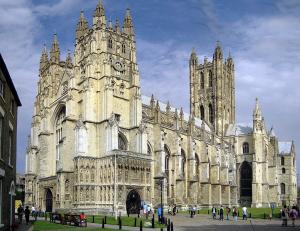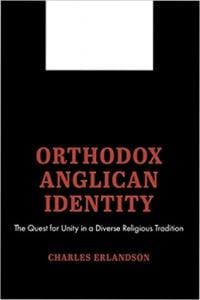 Anglican Religious Identity and History – Part II – Act III: 1960s-1998
Anglican Religious Identity and History – Part II – Act III: 1960s-1998
By the grace of God, I hope to have time and energy to continue writing the Reformed Catholicism blog.
Last time, I outlined 4 historical periods of Anglican identity as follows:
Act I. 1533-1867 – Erastian Reformed Catholicism
Act II. 1867-1960s – Colonial Relationships; 4 Spiritualities
ActIII. 1960s-1998 (or 2003) – the Anglican Communion
Act IV. 1998 (or 2003) – present – Postmodern Anglicanism
Previously I’ve described religious identity in terms of structural authority, norms, historical movements, and ethoses.
In Act III, the Anglican Communion ascended the stage, and being in communion with Canterbury (a structural definition according to my taxonomy) became the most widely used definition of Anglicanism. Anglican identity was vaguely seen as being tied up with the Anglican Communion. However, since (as the events of 2003 and beyond have demonstrated) provincial autonomy is the norm, essentially authority was that of each province.
The norms that prevailed in Act III Anglicanism were still largely the Prayer Book and the Thirty-nine Articles, but these were beginning to be severely weakened. This weakening was seen in the introduction of the 1979 Prayer Book in ECUSA, which imported a foreign theology into some parts of the Prayer Book. It was also seen less provocatively but even more fundamentally destructive of identity in England in Common Worship and its precursors. Common Worship actually marked the development of uncommon worship, where every parish could design a liturgy that was right in its own eyes. The 1662 Prayer Book in England, although still the official formulary, has been relegated to the early service with a few elderly people and no sermon or music.
The Bible as an Anglican norm was openly challenged in Act III, a fact I’ll deal with when I discuss the Liberal spirituality. Even among orthodox Anglicans, using a different hermeneutic which read the Bible apart from the tradition of the Church, it was now possible to read women’s ordination into the Bible. The hermeneutic which allowed for women’s ordination sounded at times like the hermeneutic which allowed for homosexuality.
The historical movements that came to the foreground in Act III Anglicanism were colonial independence, the Charismatic spirituality, and a triumphant liberalism. During the 19th century, when the sun still never set on the British Empire, England spread Anglicanism to her colonies. Those colonies formally remained a part of Great Britain until the 1960s when many of these colonies first gained their independence. With the growth of new provinces, the idea of an Anglican Communion was more necessary than ever.
The first Lambeth Conference was held in 1867. Interestingly, it was created to deal primarily with a liberal bishop in S. Africa. The Lambeth Conference and the creation of the Anglican Communion created a sense of a larger Anglican identity, as well as the need for authority to deal with provincial church relations. From the beginning, the Anglican Communion chose not to give itself true juridical, conciliar (council) power, the consequences of which we’re still dealing with today.
While parishes, dioceses, and provinces all have means by which binding decisions may be made in council, the Anglican Communion has foresworn any such authority. For this reason, I believe that the Anglican Communion might more properly be called the Anglican Federation.
I described the Charismatic spirituality in an earlier blog and so won’t repeat myself here. I’ll summarize by making the following points. First, the Charismatic spirituality is new in the sense that it didn’t make its way from the Pentecostal churches into Anglicanism until the 1960s. Second, some of the special emphases of the Charismatic spirituality are: baptism in the Spirit, attended by miraculous outpourings of the Spirit such as speaking in tongues and prophesying and an emphasis on extraordinary gifts; a “restorationist” view that the church is experiencing what the church in the book of Acts was experiencing; a “renewed” style of worship and the push to have praise bands; healing; the reality of spiritual warfare; a spirit of praise; a renewed attention given to the Holy Spirit; a decision-making process (both individual and corporate) that relies on experience and inner leadings of the Spirit. Third, much of contemporary Evangelical Anglicanism is also Charismatic, as is most of the Global South.
I’ll deal with what I call the Global spirituality in the next blog. It’s a historical movement that few have paid attention to until 1998 and which bears further reflection. I’ll deal with Liberalism in the blog after that.









